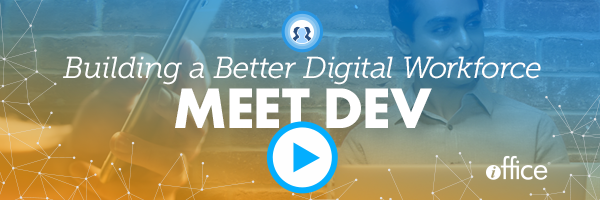How to Reap the Benefits of Workplace Crowdsourcing


Even in the most modern and progressive workplaces, innovation can go stale. Often, the lag in productivity can be traced back to employee satisfaction and the quality of an organization’s workspace and culture. If your organization finds itself standing still, collaboration is key to getting the gears cranking again. Successful organizations are using crowdsourcing to gather new ideas from the entire workforce. The idea behind this practice is that a broad slice of the employee population will yield better, more creative solutions than restricting conversations to workplace leaders. Crowdsourcing requires a societal shift that cannot occur without the right strategies in place.
 Here are four ways business leaders can promote workplace crowdsourcing and the benefits they can anticipate as a result.
Here are four ways business leaders can promote workplace crowdsourcing and the benefits they can anticipate as a result.
1. Put the right collaboration tools in the hands of your workforce.
For crowdsourcing to work, there must be avenues by which employees can communicate and share their ideas in a structured way. Collaboration tools are non-negotiable in constructing this communication highway. Check out Jive Software or UserVoice for a better look at crowdsourcing-specific collaboration tools. These platforms open up company-wide dialogues in a way that’s easy to organize and engage with.
2. Tie all departments closer together.
You can put the most advanced collaboration tools on the table, but if departments are siloed and employees don’t understand how their role impacts workplace quality for others, there’s not much for them to discuss. (At least not constructively.)
One of the most powerful ways to bridge departments and centralize information is through workplace management software. The right integrated workplace management software system (IWMS) connects all departments and creates unprecedented visibility into workflows and processes via real-time data sharing. Department heads can see how their workforce interacts with each other, space, and resources.
3. Ask the right questions at the right time.
The value of the conversations crowdsourcing will kick up depends on your ability to ask the right questions at the right level. If questions are too broad, like “How do you think we can make our workplace better?” the responses might not be practical or relevant to actual struggles and shortcomings. Likewise, if questions are too narrow, like “How would you rate your current workspace arrangement?” you risk limiting creative input.
The insights you will gain through workplace software will prompt the right kinds of questions and inspire extremely relevant, creative, proactive conversation. Refer to specific trends impacting productivity, or resources in high demand. Point out scheduling conflicts. Or ask direct questions about space utilization based on actual information about how employees use (or don’t use) space. Then, encourage employees to offer their perspectives on issues or ideas for improvement.
 4. Create a company culture that encourages ideation and deliberation.
4. Create a company culture that encourages ideation and deliberation.
If organizations want to foster new ideas and innovative thinking through crowdsourcing, they must create a company culture that promotes and supports it; an environment wherein, employees feel safe sharing out-of-the-box ideas and critical thinking in a public forum. This type of culture will depend on buy-in from the top, leadership encouragement, and business transparency about problems that need solving. Reward employees for sharing their ideas or responding thoughtfully to the ideas of others. Communicate a zero-tolerance policy for negative feedback. And promptly respond to employee discussions to validate that their voices are heard.
Crowdsourcing ensures that organizations understand key drivers of change. It also helps ensure that strategy reflects everyday reality, not abstract postulations. Lastly, and perhaps most importantly, crowdsourcing gives employees a voice and ownership over the implementation of ideas. It roots them to changes and motivates them to carry out ideas with greater veracity. By taking stock in the process of adapting and evolving, employees get more fulfillment out of the part they play and experience greater satisfaction.
Editor’s Note: This post was previously published on Inc.com and has been republished here with permission.
